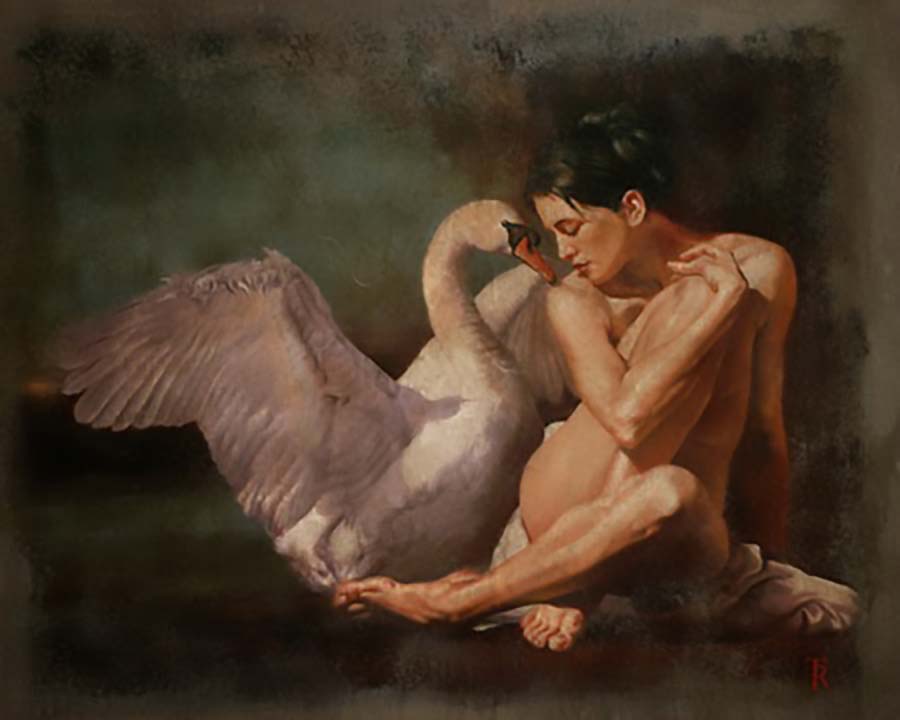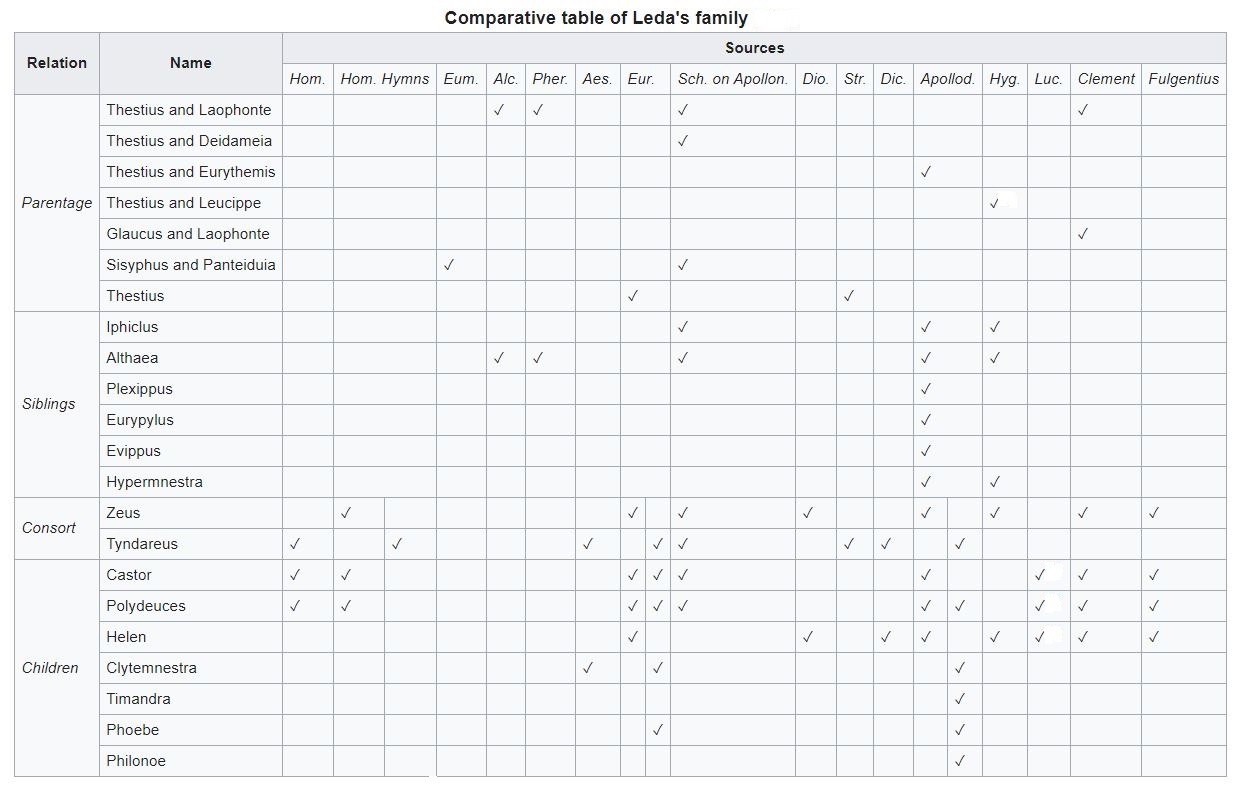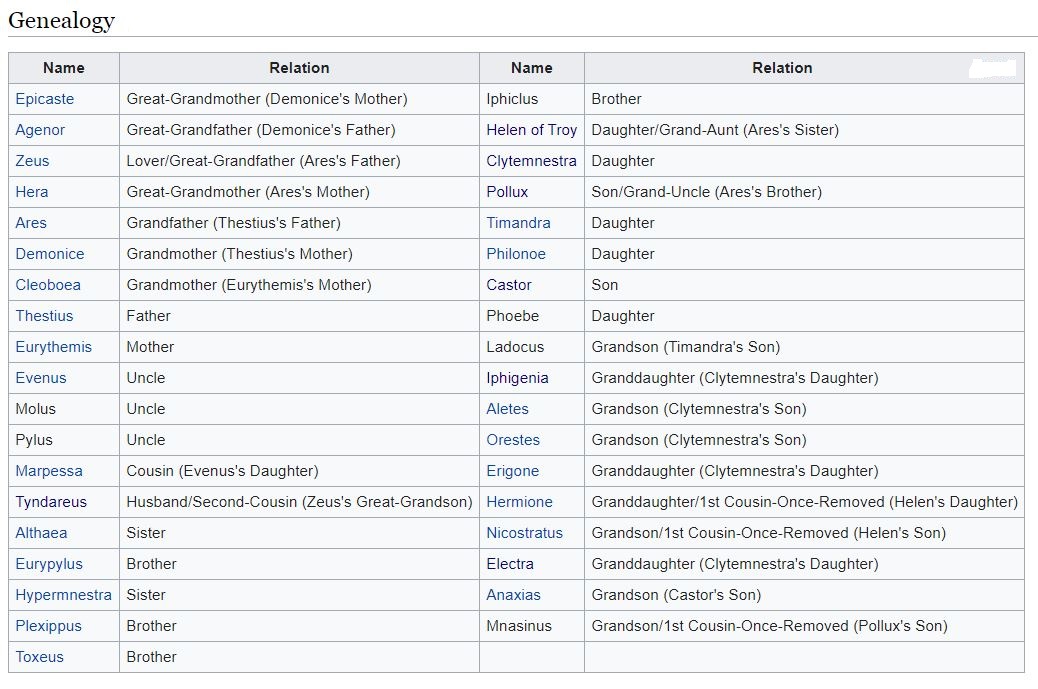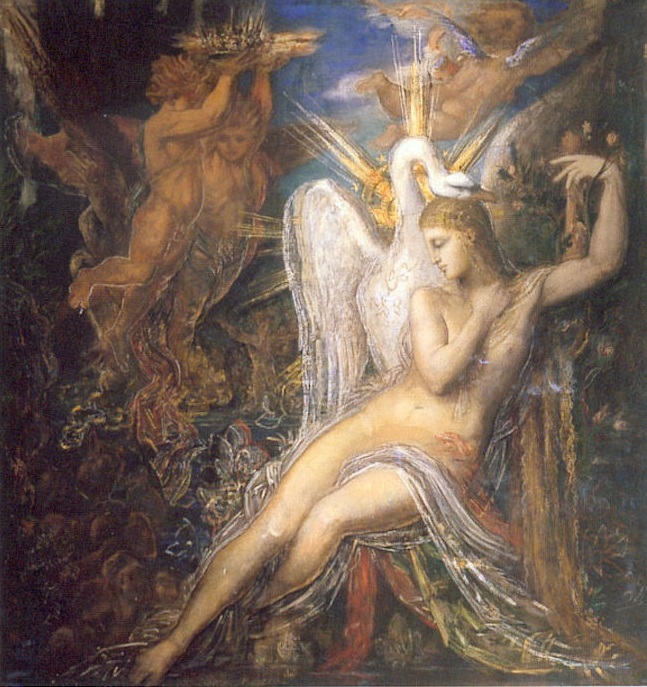
Leda

In Greek mythology, Leda (Ancient Greek: Λήδα) was an Aetolian princess who became a Spartan queen. Her myth gave rise to the popular motif in Renaissance and later art of Leda and the Swan.
Family
Leda was the daughter of the Aetolian King Thestius hence she was also called Thestias. Her mother was either Leucippe, Deidameia, daughter of Perieres, Eurythemis, daughter of Cleoboea, or Laophonte, daughter of Pleuron.
According to Alcman, Leda's parents were Glaucus and Laophonte while Eumelus attested that they are Sisyphus and Panteiduia or Paneidyia.
She married king Tyndareus of Sparta and by him became the mother of Helen of Troy, Clytemnestra, and Castor and Pollux (also spelled "Castor and Polydeuces" - known as the Dioscuri). Leda also had three other daughters by Tyndareus: Timandra, Phoebe, and Philonoe.

Mythology
When of age, Leda was married to King Tyndareus of Sparta; Tyndareus having been placed on the throne by Heracles.
Leda was a beautiful woman, and her beauty attracted the attention of Zeus, who spied her from his throne on Mount Olympus. The beauty of Leda roused Zeus to action, and the god transformed himself into a magnificent swan. Then, portraying himself as a bird escaping from a bird of prey, Zeus lay down next to Leda, and impregnated her. On the same day, Leda would also sleep with her husband.
Their consummation, on the same night as Leda lay with her husband Tyndareus, resulted in two eggs from which hatched Helen (later known as the beautiful "Helen of Troy"), Clytemnestra, and Castor and Pollux (also known as the Dioscuri). Which children are the progeny of Tyndareus the mortal king, and which are of Zeus and thus half-immortal, is not consistent among accounts, nor is which child hatched from which egg.

The split is almost always half mortal, half divine, although the pairings do not always reflect the children's heritage pairings. Castor and Pollux are sometimes both mortal, sometimes both divine. One consistent point is that if only one of them is immortal, it is Pollux. It is also always stated that Helen is the daughter of Zeus.
In Homer's Iliad, Helen looks down from the walls of Troy and wonders why she does not see her brothers among the Achaeans. The narrator remarks that they are both already dead and buried back in their homeland of Lacedaemon, thus suggesting that at least in the Homeric tradition, both were mortal.
Another account of the myth states that Nemesis (Νέμεσις) was the mother of Helen, and was also impregnated by Zeus in the guise of a swan. A shepherd found the egg and gave it to Leda, who carefully kept it in a chest until the egg hatched. When the egg hatched, Leda adopted Helen as her daughter. Zeus also commemorated the birth of Helen by creating the constellation Cygnus (Κύκνος), the Swan, in the sky.
The importance of Leda in Greek mythology ends after she has given birth to the children of Zeus, and there is relatively little mention of the queen afterwards; although the story of her husband continues for many years afterwards.
The story of Leda and Zeus is interesting though, as Leda managed to escape Hera's wrath, and even the illegitimate children of Zeus were not punished by the goddess, unlike so many of Zeus' lovers and children.
The basic imagery of the Greek myth, that of Leda and the Swan, has endured for many years though, and there have been many good painting produced on the subject.

Sources
Homer, Iliad
Apollod. 3.10.5; Paus. 3.13.8; Eur. IA 49
Hyginus, Fabulae, 14
Scholia on Apollonius Rhodius, Argonautica, 201
Pseudo-Apollodorus Bibliotheca 1. 7. 10
Alcman. Fragment 15 as cited in Scholiast on Apollonius of Rhodes. Argonautica, 1.146
Scholiast on Apollonius of Rhodes. Argonautica, 1.146 as cited in Lyric Poets. Eumelus, Life
"Wikipedia"
Our Mobile Application
Check out Our Mobile Application "Ancient Greece Reloaded"


